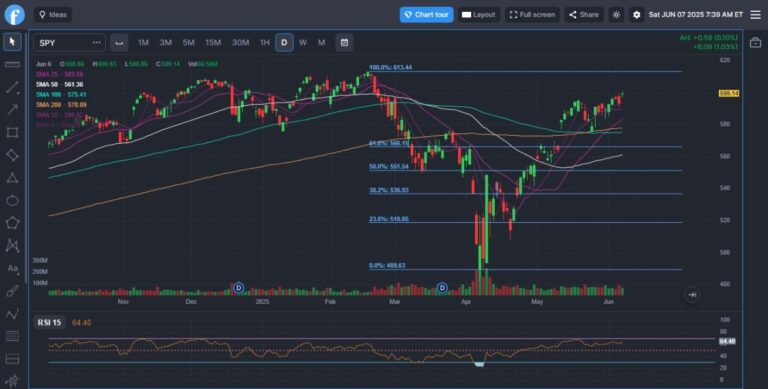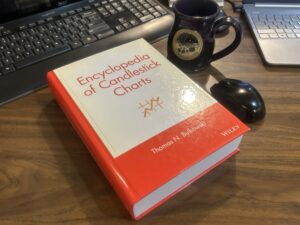In finance, “the Greeks” refer to variables that measure the sensitivity of an option’s price to various factors. Here are the primary Greeks:
- Delta (Δ): Measures how much the price of an option changes for every $1 movement in the underlying asset’s price.
- Gamma (Γ): Indicates how much the Delta of an option changes for every $1 movement in the underlying asset’s price.
- Theta (Θ): Represents the rate at which an option’s value declines as time passes, reflecting time decay.
- Vega (ν): Shows how much the price of an option changes with a 1% change in the underlying asset’s volatility.
- Rho (ρ): Measures the expected change in an option’s price for a 1% change in the risk-free interest rate.
These metrics are essential for options traders to understand and manage risk effectively.
Whether you’re a beginner or a seasoned trader, understanding The Greeks gives you an edge in navigating complex financial markets.
Delta
Delta indicates how much the price of an option changes with a $1 change in the underlying asset’s price.
The Delta for call options is between 0 and 1. For put options, it goes from -1 to 0. When the strike price of an at-the-money (ATM) option is at or close to the current market price of the underlying asset, the Delta is usually around 0.50 for calls and -0.50 for puts. In the meantime, the Delta for calls and puts on in-the-money (ITM) options is about 1 and -1, respectively. The higher probability of exercising is reflected in these values.
Traders use Delta to gauge directional risk, with higher delta values meaning the option more strongly correlates with the underlying asset’s price moves. In addition, Delta can serve as a rough estimate of the probability that an option in the money, helping traders assess risk and adjust their position sizes.
Delta-Neutral Portfolios
Delta is also useful for constructing Delta-neutral portfolios. This trading strategy tries to zero out directional risks from price changes in the underlying asset. Options traders and market makers employ this approach to hedge their positions against small-to-moderate price fluctuations. By balancing positive and negative Deltas across different options or between options and the underlying asset, traders can create a relatively stable portfolio, whether the market moves up or down (within reason).
In a Delta-neutral portfolio, the sum of all position Deltas equals zero. For example, if a trader holds options whose Deltas add up to 500, they might short sell enough shares of the underlying stock to create a negative Delta of -500, resulting in a net delta of zero.
Gamma
Gamma is the Greek that measures the rate of change in an option’s delta relative to movements in the underlying asset’s price. While Delta is like a snapshot of the current speed of your option’s value—how fast it changes as the stock price moves—Gamma tells you whether it’s picking up speed or slowing down. It gives you an idea of how much delta will change for each $1 shift in the underlying asset.
Gamma is highest for ATM options, where small price changes greatly affect the likelihood of the option finishing ITM. It’s lower for deep-in-the-money or out-of-the-money (OTM) options, which are less sensitive to small price changes.
Keeping an eye on Gamma can help those looking to maintain a Delta-neutral portfolio: a higher Gamma means you’ll have to adjust your holdings more frequently. Gamma can also help determine how much the option’s price sensitivity accelerates with shifts in the underlying asset’s price.
Gamma-Neutral Options Strategies
A Gamma -neutral strategy seeks to stabilize the Delta of a portfolio, meaning that the portfolio’s Delta doesn’t shift too much as the underlying asset’s price moves. By achieving Gamma neutrality, a trader ensures that their portfolio’s Delta remains stable across a range of prices.
Theta
Theta measures the rate of an option’s time decay, quantifying how much an option’s price is expected to decrease as it nears expiration, assuming other factors stay constant. Generally, Theta is negative for both call and put options. ATM options experience the highest Theta because of their time value, while ITM and OTM options have lower Theta because they possess less time value to lose.
Traders use Theta to help see how much value an option will lose daily. Theta is also important for income-generating strategies like covered calls or cash-secured puts, where traders benefit from the gradual erosion of option premiums over time.
Traders holding long positions also want a handle on the negative impact of Theta , ensuring that any gains from price changes in the underlying asset are enough to offset the losses from time decay.
Theta-Neutral Strategies
When constructing a Theta-neutral portfolio, a trader aims to offset the time decay of options within the portfolio so that the overall value remains stable as expiration approaches. This strategy is often used by traders who want to focus on changes in volatility (vega) or the underlying asset’s price (delta) without being affected by the passage of time.
Theta-neutral strategies work best in relatively stable markets.
Vega
Vega measures an option’s price sensitivity to changes in the underlying asset’s volatility. More specifically, it tells you how much the price of an option is expected to change with a 1% change in implied volatility. Typically, Vega is highest for ATM options because these are most affected by changes in volatility, and it tends to be higher for options with more time until expiration, as they have a higher time value.
Traders use vega to gauge how changes in market volatility will impact the value of their options—like checking how massive the waves are while you’re on a boat to see how much your vessel is going to rock. Traders expecting increased volatility might buy options to capitalize on rising prices due to their higher vega, while those anticipating lower volatility might sell options to collect premiums.
Vega-Neutral Strategies
Vega-neutral is a risk management strategy to minimize or eliminate the impact of volatility changes on portfolios. As with the other Greek-neutral strategies, to calculate the Vega of an options portfolio, sum up the Vegas of all the positions. The Vega on short positions should be subtracted by the Vega on long positions (all weighted by the lots). In a Vega -neutral portfolio, the total Vega of all the positions will be zero.
Achieving a Vega -neutral position often involves combining long and short options. For example, suppose you have a portfolio with a positive vega, meaning it will gain value as volatility increases. In that case, you might sell options with a similar but negative vega to neutralize the potential impact of volatility changes. By doing so, you can focus on other aspects of the trade, such as the movement of the underlying asset, without worrying about the unpredictability of volatility.
Rho
Rho measures how sensitive an option’s price is to changes in the risk-free rate, typically U.S. Treasurys. More specifically, rho is the expected change in an option’s price for a 1% change in interest rates.
Call options typically have a positive rho, meaning that their prices increase with rising interest rates, while put options generally have a negative rho since their prices decrease when interest rates rise. Rho is greater for longer-term options, since the influence of interest rate changes is greater over longer periods.
Traders use Rho to determine the potential impact of interest rate changes on options positions. This metric is more important for long-term equity anticipation securities (or LEAPS), where interest rate fluctuations more significantly affect options prices. In addition, Rho is used by traders to hedge interest rate risk so that their portfolios are balanced to mitigate potential losses because of changes in interest rates.
Understanding the Greeks of finance is crucial to being an expert in options trading since it helps you comprehend and control the dynamics and risks of your investments.









